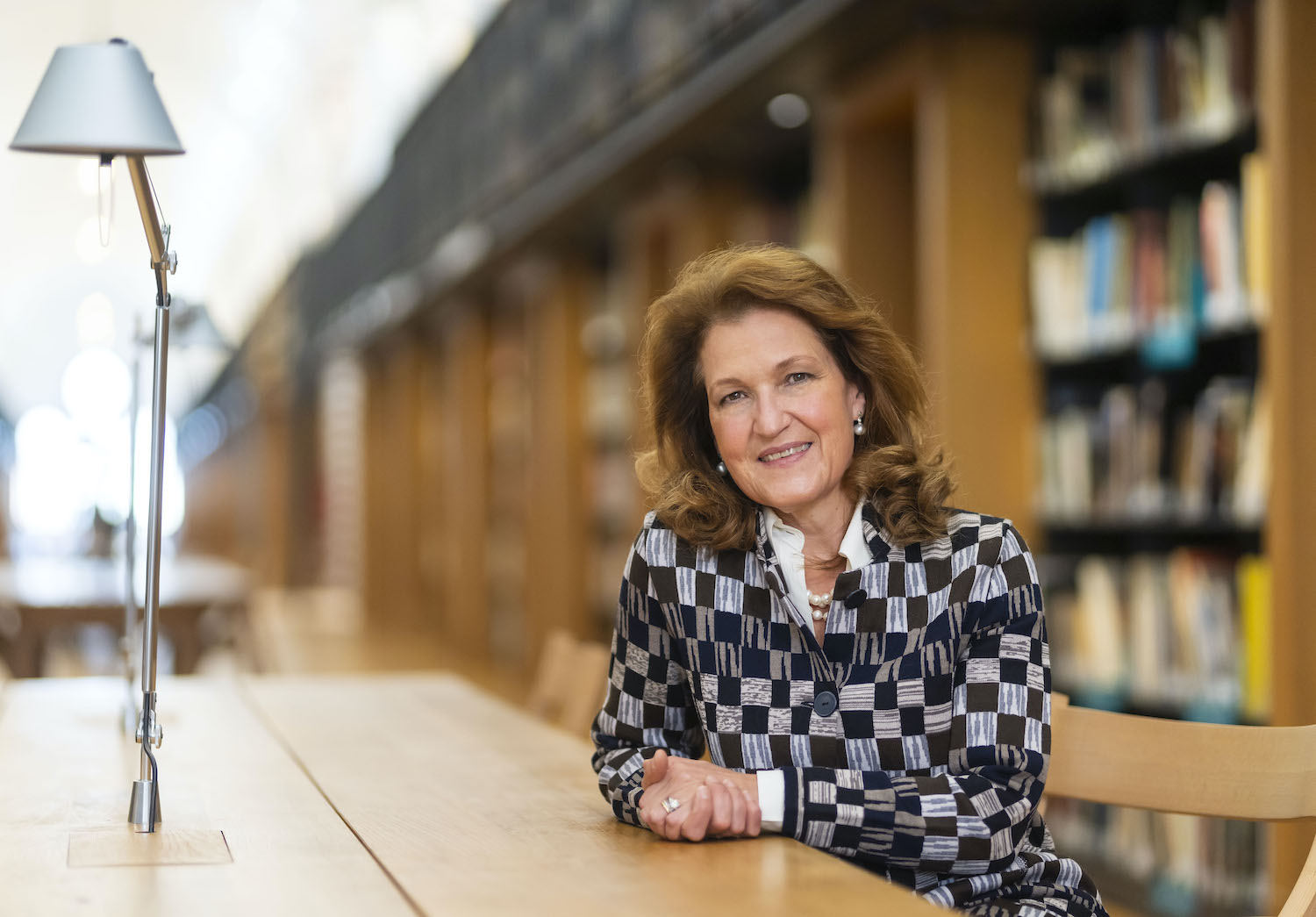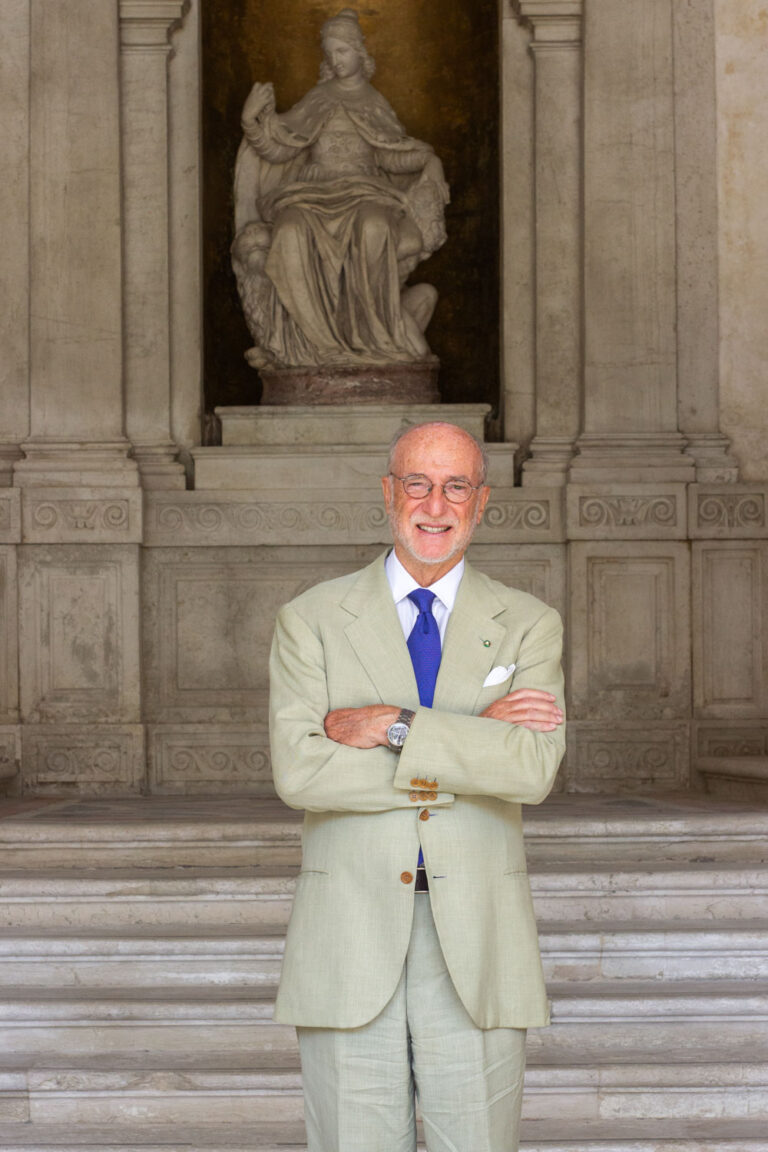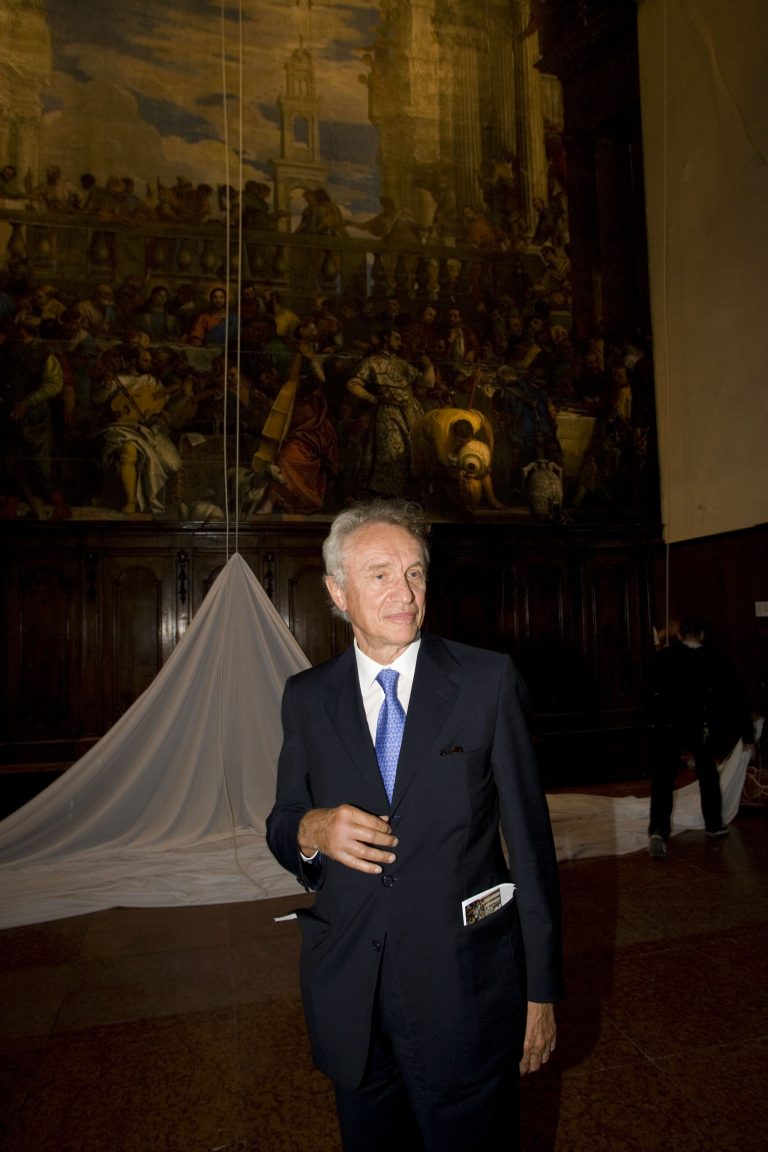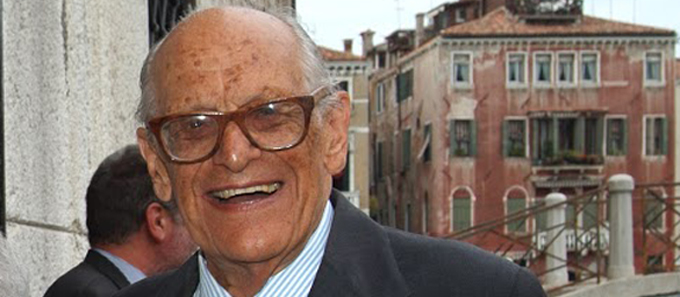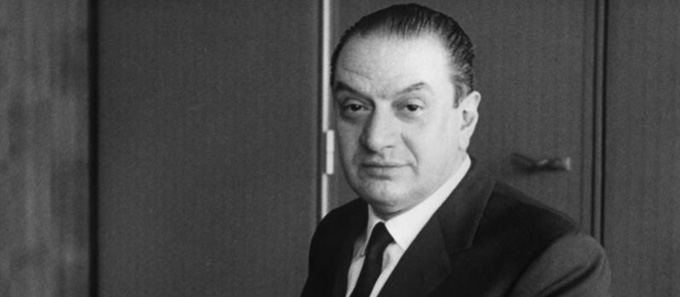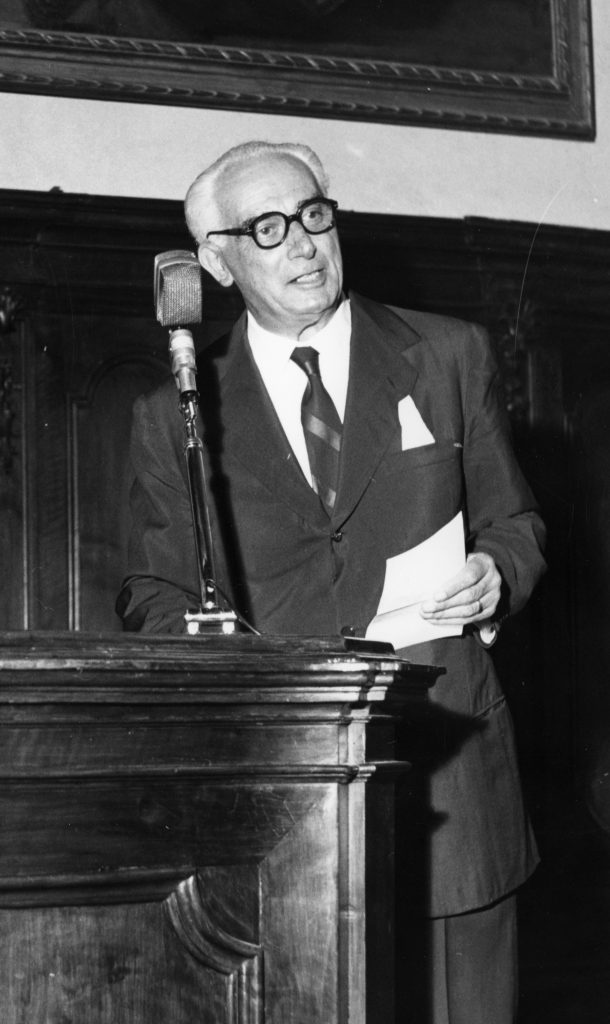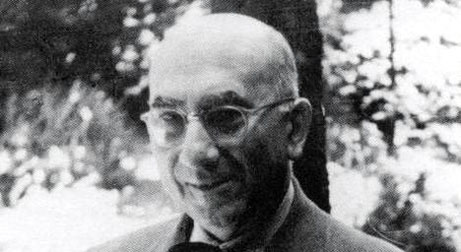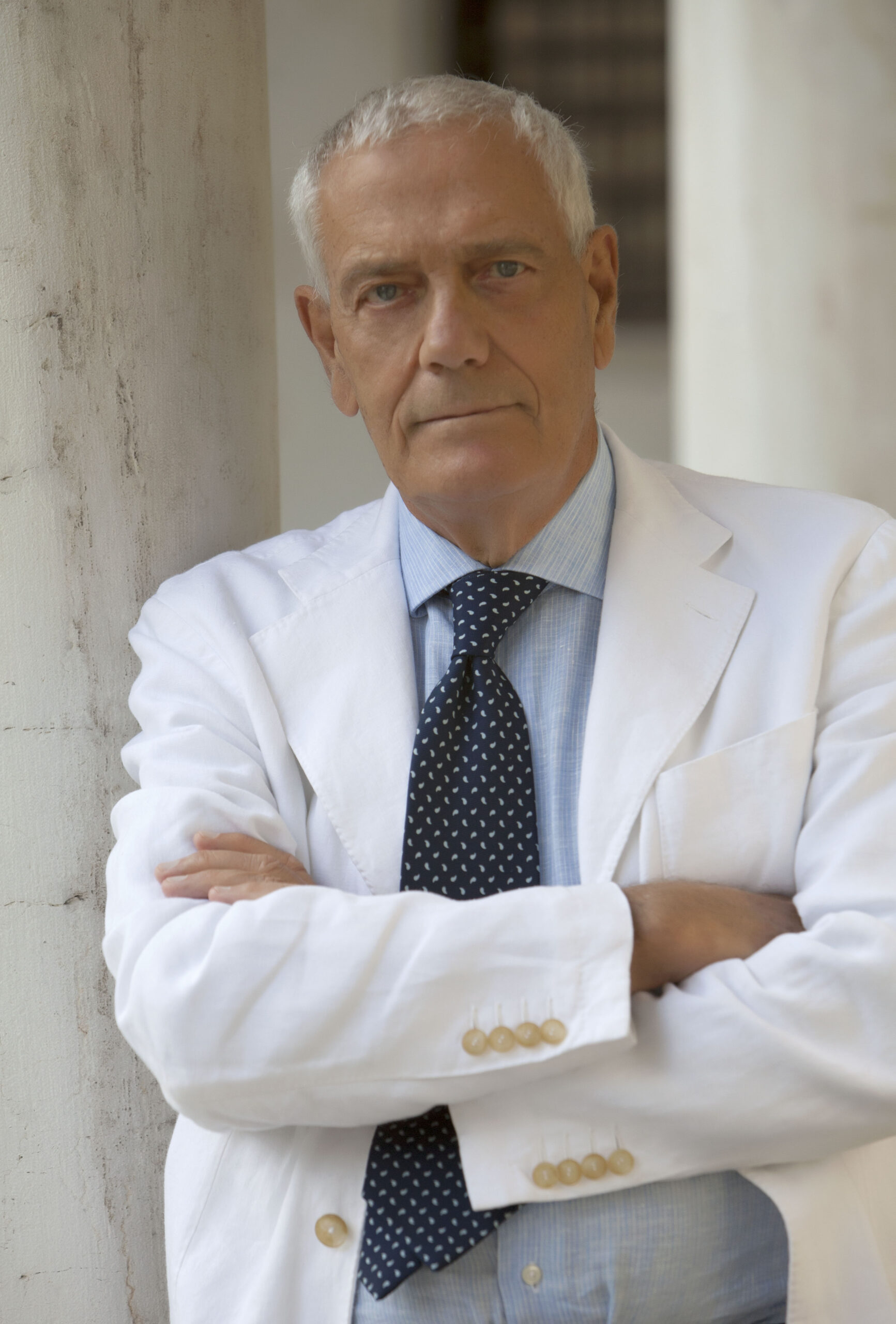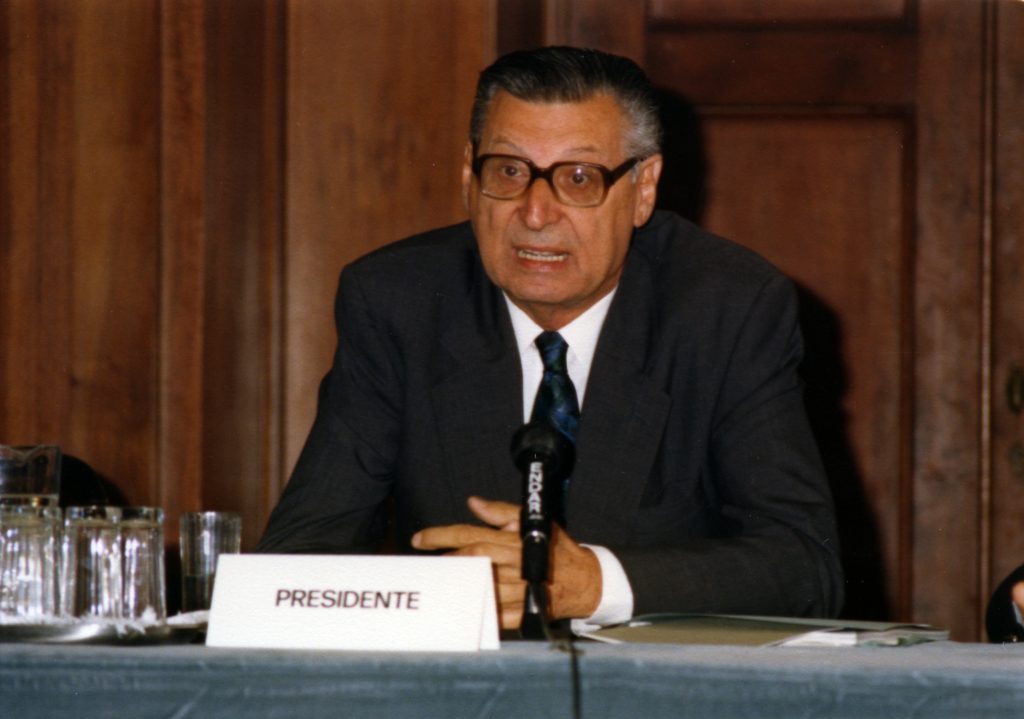The Giorgio Cini Foundation, born in 1951 at the behest of Vittorio Cini to commemorate his son Giorgio who died tragically on 31 August 1949 in a flying accident in Cannes, is the first example in Italy of a private organisation with humanistic research as one of its main aims.
The Giorgio Cini Foundation was established on 20 April 1951 on the initiative of Vittorio Cini, in memory of his son Giorgio, with the aim of promoting the restoration of the monumental complex on the Island of San Giorgio Maggiore, severely deteriorated after almost one hundred and fifty years of military occupation, to reintegrate it into the life of Venice and to make it an international centre for cultural activities, research and major meetings.
Over its more than seventy-year history, the Foundation has promoted countless social, cultural and artistic activities in a constant dialogue with other institutions and the most authoritative Italian and international representatives of culture and science. It has always maintained a hybrid vocation, between humanism and science, promoting and hosting hundreds of seminars and conferences on contemporary challenges, from a technological, ethical, philosophical and global point of view, bringing together the best researchers and experts at an international level.
The Giorgio Cini Foundation has transformed the Island of San Giorgio Maggiore into a prestigious venue for international meetings in the name of dialogue and listening between different worldviews. Since the 1960s and throughout the Cold War it has been a privileged meeting place for academics and personalities from East and West. In 1971, it signed a programme with the Ministry of Foreign Affairs for the development of international cultural and scientific activities. It hosted ministerial meetings of the then EEC and ECSC, UNESCO, European Investment Bank, OCDE, to name but a few. In 1987 it was the venue for the G7 and in 2021 for the G20 Economy.
In addition to exhibitions, research activities, study meetings and seminars, and training and advanced training courses, the Foundation hosts seven Institutes and three Research Centres in an artistic and monumental setting, including masterpieces by Palladio and Longhena (Institute of Art History, Institute for the History of the Venetian State and Society, Institute for Music, Italian Antonio Vivaldi Institute, Intercultural Institute of Comparative Music Studies, Institute for Theatre and Melodrama, Seminars in Early Music; Centro Studi di Civiltà e Spiritualità Comparate; Centro Vittore Branca and the Centro Digitale – ARCHiVe), each of which specialises in areas ranging from theatre to spirituality, from music to art, from historical research to new technologies for the digitalisation and enhancement of cultural heritage.
The Cini Foundation is also home to the ‘Vittore Branca’ International Centre for the Study of Italian Civilisation, named after the illustrious Italianist and historian Giorgio Cini Foundation Secretary General. It is a humanities centre set up in 2010 to welcome academics, writers and artists from all over the world who wish to spend a period of study living in San Giorgio Maggiore and visiting the Foundation and Venice libraries.
Every year the Foundation offers residential scholarships to young scholars from international universities and institutes.
The extraordinary importance of the Foundation is well testified by the excellence of the events, documented in publications, organised and hosted on the Island of San Giorgio Maggiore and by the size of the cultural heritage comprising ancient books, drawings, miniatures, tapestries, paintings, furniture, sculpture and archives with documentary and photographic collections from all over the world.
In 1984, the Gallery of Palazzo Cini at San Vio in Venice’s historic city centre was added to the Foundation, with its collection of Tuscan and Ferrara Renaissance paintings from Vittorio Cini’s personal collection.
On the Island of San Giorgio Maggiore, the ‘Lo Squero’ Auditorium is the venue for important classical and contemporary music concerts and large exhibition spaces host exhibitions devoted to the most interesting expressions of contemporary art and architecture.
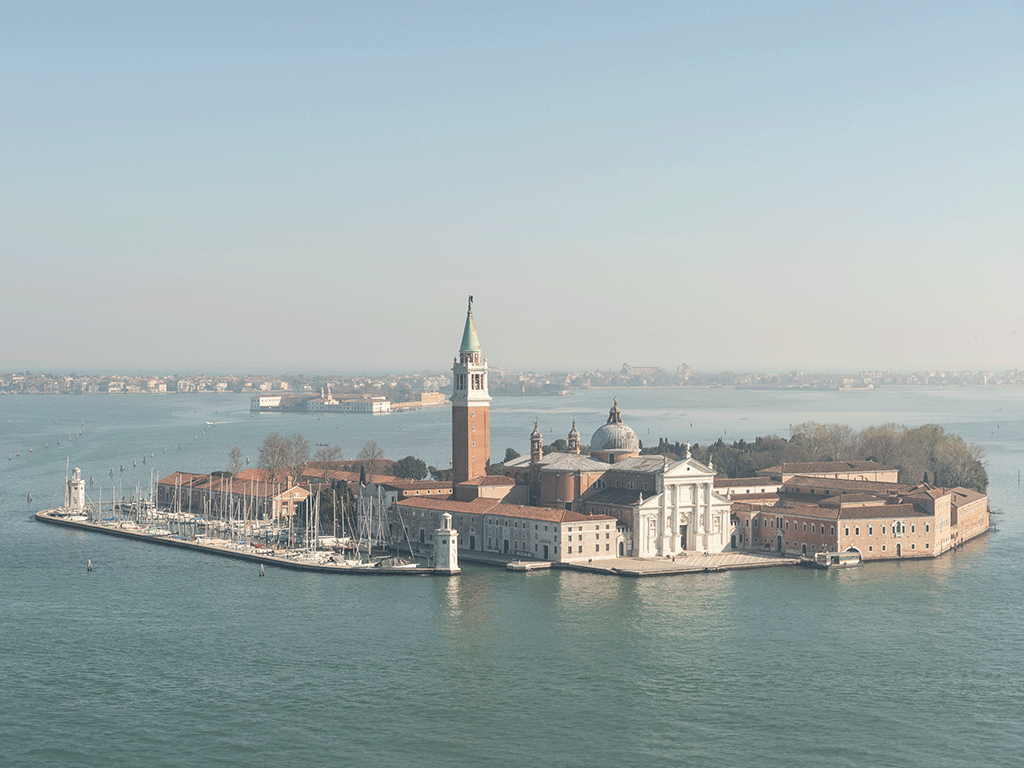
The Island of San Giorgio Maggiore has witnessed centuries of historical and cultural transformations, evolving from a medieval monastic center to a symbol of the Venetian Renaissance through the work of Palladio, and eventually becoming an international cultural landmark with the establishment of the Giorgio Cini Foundation. With its extraordinary architecture, captivating history, and significant role in the contemporary cultural landscape, San Giorgio Maggiore remains a vibrant hub that seamlessly blends tradition and innovation.
THE ISLAND OF SAN GIORGIO MAGGIORE
The Island of San Giorgio Maggiore, already inhabited in the Roman period, was in ancient times called Insula Memmia from the eponymous gens who must have owned property here, and assumed its present name after the erection of a church dedicated to St. George in the first half of the 9th century. In 982, Abbot Giovanni Morosini obtained the island as a gift from Doge Tribuno Memmo, with the aim of founding a Benedictine monastery there.
From that date onwards, the Island and monastery grew and prospered, becoming a spiritual and economic centre of the first order, also thanks to the Doge’s protectorate exercised and renewed, without interruption, until the fall of the Serenissima. The complex began to take on its current physiognomy around the end of the 15th century, with the intervention of the Lombard architect Giovanni Buora, responsible for the construction of the luminous space of the Manica Lunga, the abbey’s former dormitory, completed in 1508 with the relief of St. George by Giovan Battista Bregno. His son Andrea was responsible for the construction of the Cypress Cloister, a remarkable example of Renaissance architecture (1517-1526).
The second major architectural intervention that affected the Benedictine buildings was the work of Andrea Palladio, who, having taken on the role of first architect in 1560, radically renovated the previous Gothic church, built the new refectory (in which Paolo Veronese painted the admirable canvas, The Marriage at Cana, now in the Louvre but recently ‘returned’ to its original location through the placement of a facsimile created in 2007 with advanced technologies by the Atelier Factum Arte of Madrid) and the second cloister, completed only in 1615: one of Palladio’s most beautiful creations with a harmony between empty and full spaces that makes it a perfect place for meditation. The Venetian Baldassare Longhena renovated the spaces of the monumental complex with two interventions that mark the start of the Baroque season at San Giorgio Maggiore: the Monumental Staircase, which gives access to the abbot’s flats, begun in 1643, and the Library, from 1654-1671, adorned with the cycle of paintings by the Lucchese painters Giovanni Coli and Filippo Gherardi and the walnut bookcases designed by Longhena himself. Following the fall of the Serenissima in 1797, the Island became a barracks and prison; the military function was later maintained by the Austrian and Italian governments, inaugurating a long season of spoliation and tampering that profoundly changed the face of the monastery.
With the monumental buildings divided up without criteria and often used for purposes disrespectful of their historical and artistic value, the island experienced a period of painful decay. It was only thanks to the intervention of Vittorio Cini and the restoration directed by Ferdinando Forlati after World War II that the abbey complex was restored to its former splendour.
Since this initial recovery in the 1950s, many of the spaces in the monumental complex and the structures built on the island during the years of domination have been restored and returned to public use, even for uses other than those for which they were originally intended. Examples include the structures that housed the Maritime Centre and the Arts and Crafts Centre, which have now been restored and become the site of Le Stanze del Vetro (The Glass Rooms) and the Le Sale del Convitto (The Boarding School Rooms) Exhibition Centre, or the Squero, an old workshop for boat repair, transformed into a modern and atmospheric Auditorium in 2016. The Island has also been enriched with the creation of the Borges Labyrinth, a sort of ‘third cloister’, realised on the occasion of the 25th anniversary of the death of the famous Argentine writer (14 June 1986 – 14 June 2011), designed by Randoll Coate in collaboration with the Fundación Internacional Jorge Luis Borges.
The Giorgio Cini Foundation is hosting in the park on the island of San Giorgio Maggiore in Venice Vatican Chapels, created in 2018 as the first Pavilion of the Santa Sede at the Biennale Esposizione Internazionale di Architettura – La Biennale di Venezia. A space of approximately one and a half hectares that houses 10 chapels created by 10 international architects.
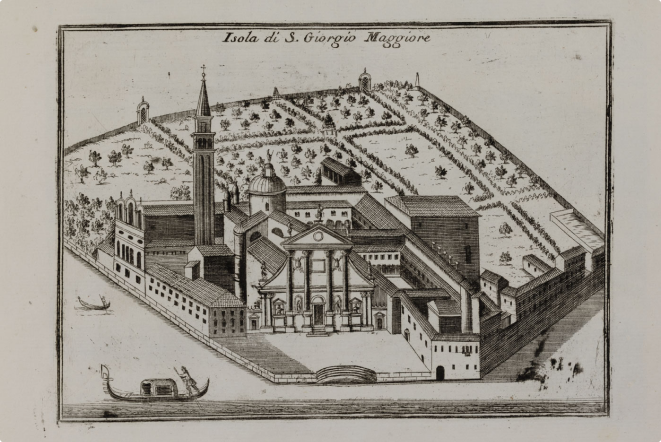
The shop image caption is aimed at young cellists with a strong aptitude for understanding and interpreting research and experimental music.

The shop image caption is aimed at young cellists with a strong aptitude for understanding and interpreting research and experimental music.

The shop image caption is aimed at young cellists with a strong aptitude for understanding and interpreting research and experimental music.

The shop image caption is aimed at young cellists with a strong aptitude for understanding and interpreting research and experimental music.
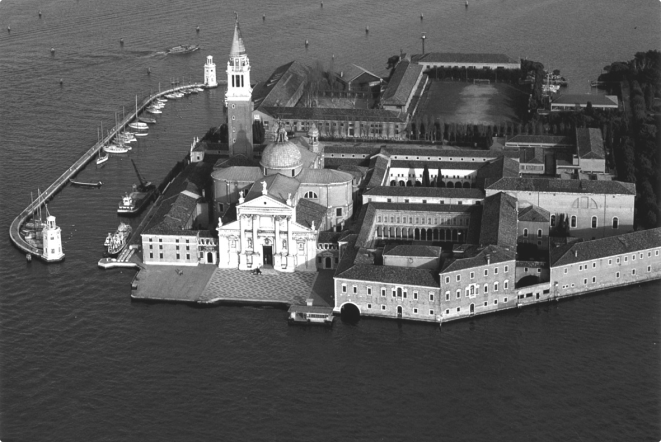
The shop image caption is aimed at young cellists with a strong aptitude for understanding and interpreting research and experimental music.
